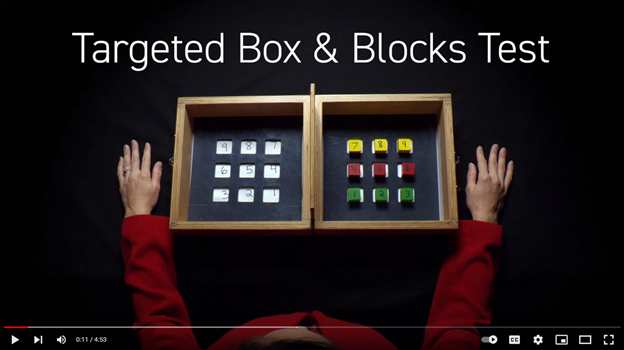 
Science & Engineering Laboratories
Discover how scientists and engineers in the Office of Science and Engineering Laboratories (OSEL) at the U.S. Food and Drug Administration’s (FDA) Center for Devices and Radiological Health (CDRH) promote innovation for the development of new safe and effective medical devices.
OSEL Program Highlights
3 New Medical Device Material Safety Summaries
As part of the FDA’s ongoing commitment to promote the safety of medical devices, the FDA and ECRI are publishing safety summaries for materials that are commonly used in implantable medical devices and the effects of those materials on patients over time. Three new safety summaries are now available:
- Cobalt Chromium (CoCr)
- Stainless Steel
- Titanium
Read the Medical Device Material Safety Summaries.
Updates to the Catalog of Regulatory Science Tools to Help Assess New Medical Devices
Instructions for Use
The Catalog of Regulatory Science Tools provides a peer-reviewed resource for medical device companies to use where standards and Medical Device Development Tools (MDDTs) do not yet exist. These tools expand the scope of innovative science-based approaches to help improve the development and assessment of emerging medical technologies.
We’ve provided instructions for use for these tools, including 3 new tools:
- Color Performance Review Tool for Endoscopy Devices
- Human Shoulder Finite Element Model
- Gravity Flow Rate Testing in Enteral Tubes (updated)
- Monopolar Radiofrequency (RF) Thermal Dispersion Model for the Vaginal Wall
- Reusable Small Volume Blood Reservoir For In Vitro Dynamic Hemolysis Testing (updated)
Browse the Catalog of Regulatory Science Tools.
Video
We’ve also provided a video for the targeted Box and Blocks Test (tBBT) tool. This video demonstrates how to administer the targeted Box and Blocks Test (tBBT) to a patient or participant. The test is a performance-based clinical outcome assessment tool that elicits ecologically representative actions, including movement initiation, grasp, transport, and controlled release of objects during an upper limb task.
 Watch the instructional video for the Targeted Box and Blocks Test (tBBT).
Chemical Characterization
Chemical RISk (CHRIS) Calculator is Qualified as a New Medical Device Development Tool
The FDA qualified the “CHemical RISk calculator (CHRIS)- Color Additives” through the voluntary Medical Device Development Tools (MDDT) program. The MDDT-qualified CHRIS – Color Additives tool:
- Is a non-clinical assessment model (NAM) that can be used by medical device companies and sponsor-investigators to conduct screening level risk assessments to aid in the biocompatibility evaluation of polymeric medical device components that contain color additives (CAs).
- Calculates a conservative margin of safety value for a CA contained within a polymeric medical device component to aid in determining if further assessment of one or more biocompatibility endpoints is necessary for the CA and/or associated impurities based on the input provided by the user. As with other MDDTs, all assessments are dependent on the tool being used within its Context of Use.
- Can assist device manufacturers by providing instantaneous feedback on whether the presence of CAs or other additives and impurities associated with CAs in a device would require additional justification and/or testing to demonstrate acceptable biological risk.
Find out more about the Medical Device Development Tool.
Chemical Characterization Questions and Answers

CDRH’s List of Guidance Documents Proposed for Fiscal Year 2023
CDRH posted the list of guidance documents it intends to publish this fiscal year (FY2023). The B-list, a list of device guidance documents the FDA intends to publish as resources permit during FY2023, includes:
- Draft Guidance - Chemical Analysis for Biocompatibility Assessment of Medical Devices
Read more about the CDRH Proposed Guidances for Fiscal Year 2023 (FY2023).
Recent Publication
Read an article from the Association for the Advancement of Medical Instrumentation (AAMI):
Contact OSEL
If you have questions about OSEL, email OSEL_CDRH@fda.hhs.gov.
You can also subscribe to CDRH Science for regular email updates on CDRH’s scientific topics and OSEL.
About CDRH’s Office of Science and Engineering Laboratories:
The mission of Office of Science and Engineering Laboratories (OSEL) in the FDA’s Center for Devices and Radiological Health (CDRH) is to advance the science needed to evaluate the benefits and risks of emerging medical technologies and devices. OSEL conducts laboratory and field research in the areas of physical, life, and engineering sciences that leads to innovative, science-based approaches or methodologies (tools) to help assess the safety or effectiveness of medical devices and radiation-emitting products. OSEL’s collaborations with academia, health care providers, other government agencies, and industry support CDRH efforts to ensure public safety in areas as varied as medical imaging, medical device software, breast implants, and augmented reality surgical navigation systems. Read more about Office of Science and Engineering Laboratories.
|